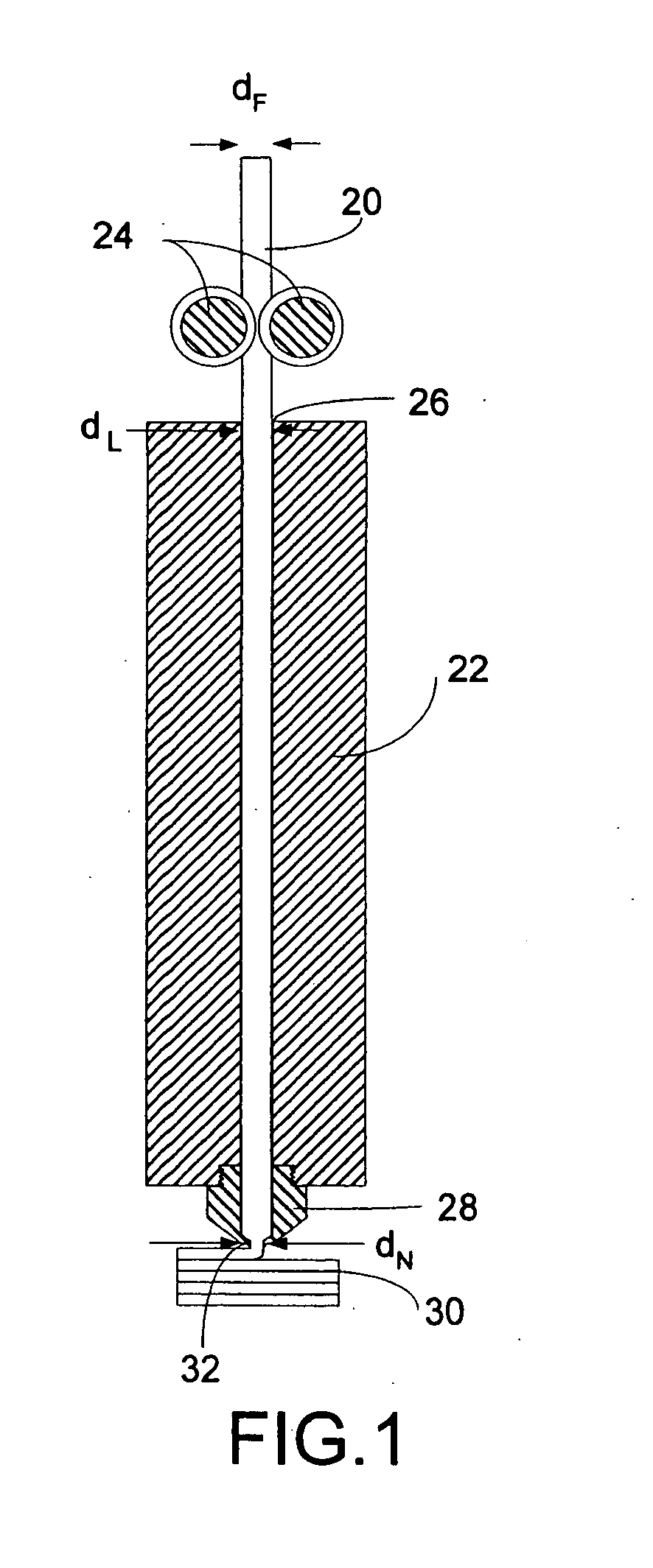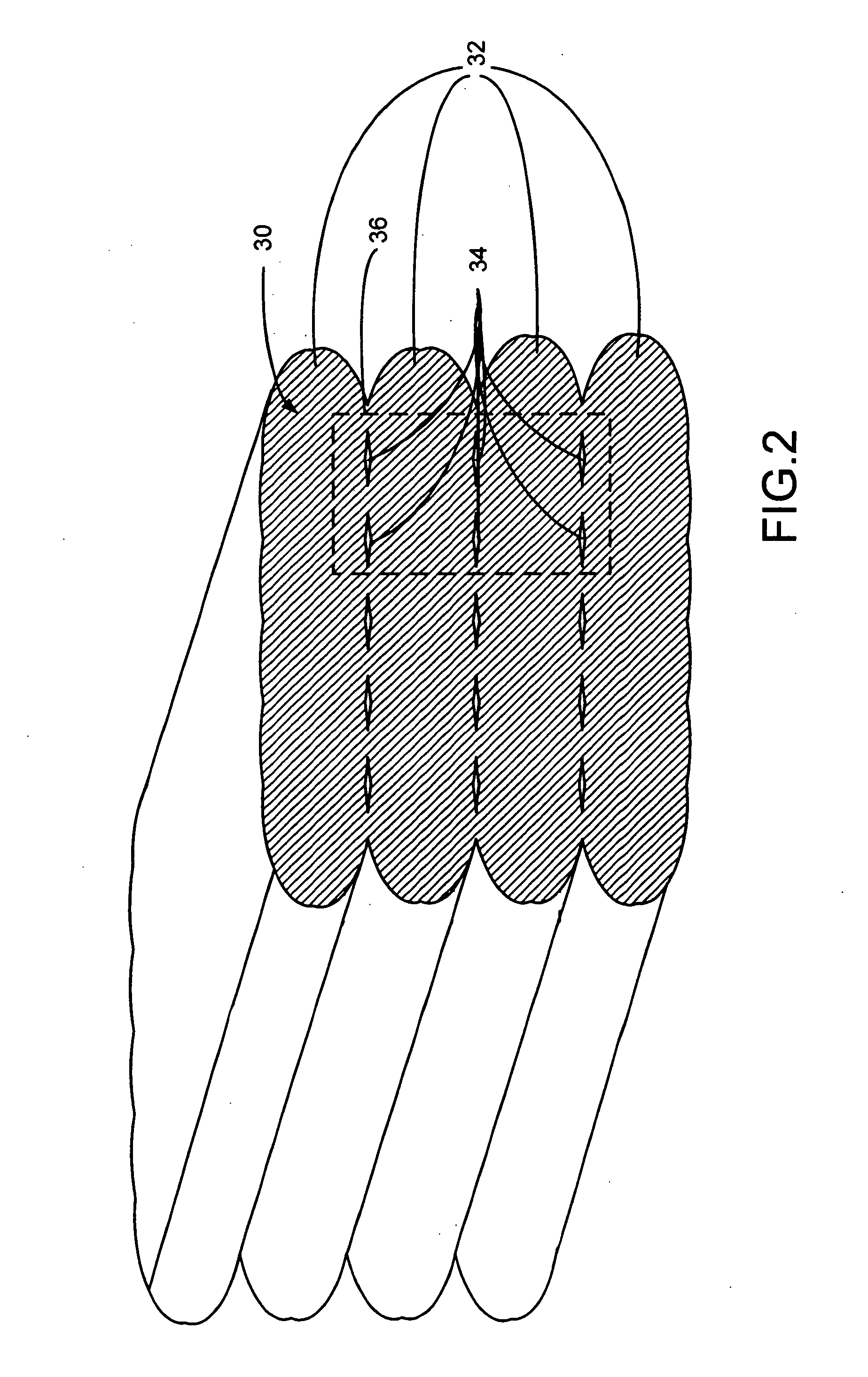High-precision modeling filament
a high-precision, filament technology, applied in the direction of additive manufacturing processes, manufacturing tools, instruments, etc., can solve the problems of bead width errors, start points and ends, and bead width errors in parts
- Summary
- Abstract
- Description
- Claims
- Application Information
AI Technical Summary
Benefits of technology
Problems solved by technology
Method used
Image
Examples
Embodiment Construction
[0028] The objects of the invention are to produce modeling filament having a diameter that meets tolerance limits established according to certain identified criteria, and to produce high-quality models using the modeling filament as feedstock. The present invention is based on the recognition that variances in filament diameter, as found in the prior art, can significantly degrade the performance of a fused deposition modeling liquifier resulting in a poor quality model. We will describe the tolerance limits of the present invention and a manufacturing process incorporating filament diameter control that will produce modeling filament that meets these limits.
[0029]FIG. 1 shows a cross-section of an exemplary liquifier 22, combined with a pair of feed rollers 24 that impel a strand of filament 20 into the inlet or cap 26 of the liquifier 22. The feed rollers 24 are driven at a controlled rate by a motor (not shown). A nozzle or tip 28 selectively deposits flowable thermoplastic on...
PUM
| Property | Measurement | Unit |
|---|---|---|
| diameter | aaaaa | aaaaa |
| length | aaaaa | aaaaa |
| diameter | aaaaa | aaaaa |
Abstract
Description
Claims
Application Information
 Login to View More
Login to View More - R&D
- Intellectual Property
- Life Sciences
- Materials
- Tech Scout
- Unparalleled Data Quality
- Higher Quality Content
- 60% Fewer Hallucinations
Browse by: Latest US Patents, China's latest patents, Technical Efficacy Thesaurus, Application Domain, Technology Topic, Popular Technical Reports.
© 2025 PatSnap. All rights reserved.Legal|Privacy policy|Modern Slavery Act Transparency Statement|Sitemap|About US| Contact US: help@patsnap.com



